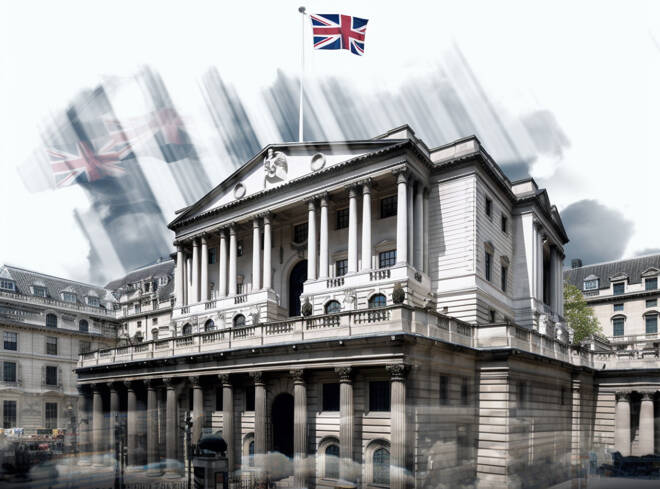Advertisement
Advertisement
Pound Falls as BOE Cuts Rates to 4.5%—Will More Easing Follow?
By:
Key Points:
- BOE cuts rates to 4.5%, its first reduction of 2025, aiming to counter weak economic growth and stagnating GDP.
- U.K. inflation eases to 2.5%, giving the BOE room to shift focus toward growth while balancing trade war risks.
- The British pound fell sharply after the rate cut, while gold prices gained as investors sought safe-haven assets.
- Analysts debate if the BOE will cut rates again in March or stick to a gradual one-cut-per-quarter strategy.
- Trade war fears add uncertainty to BOE policy, with U.S. tariff threats posing potential inflationary risks.
Bank of England Cuts Rates to 4.5%, Resumes Monetary Easing
The Bank of England (BOE) delivered its first rate cut of 2025, lowering the benchmark interest rate by 25 basis points to 4.5%. The move, backed by seven out of nine monetary policy committee members, marks the central bank’s return to monetary easing as policymakers respond to sluggish economic growth.
This decision was widely anticipated after a series of weak economic reports underscored Britain’s stagnating economy. The U.K.’s GDP remained flat in the third quarter, and November’s marginal 0.1% expansion followed a 0.1% contraction in October. Additionally, weak retail data reinforced expectations that the BOE would act to support growth.
Inflation Drop Clears Path for BOE Action
Inflation trends also played a critical role in the decision. December’s consumer price index (CPI) reading showed inflation easing to 2.5%, lower than forecasted. Core inflation also cooled, further justifying a rate cut. With the BOE’s inflation target set at 2%, the latest data suggested policymakers had enough room to shift focus toward economic growth without immediately reigniting price pressures.
However, the central bank must balance this easing with external risks. A potential trade war looms, as U.S. President Donald Trump considers imposing tariffs on key trading partners, including the U.K. and the European Union. A full-blown trade conflict could introduce inflationary risks, complicating the BOE’s future policy decisions.
Market Reaction and Rate Cut Expectations
Following the BOE’s announcement, the British pound fell sharply, reflecting market concerns over further easing. Gold prices, meanwhile, gained as traders sought safe-haven assets.
Looking ahead, analysts are now debating the central bank’s next move. Kallum Pickering, chief economist at Peel Hunt, pointed out that the BOE faces a crucial choice—whether to signal another rate cut as soon as March or maintain a slower pace of easing. Peel Hunt’s base case suggests a measured approach, with a second rate cut expected in May. However, risks remain skewed toward a more aggressive response, potentially leading to another cut at the BOE’s March 20 meeting.
Short-Term Outlook: Pound Under Pressure as BOE Eyes Further Cuts
The BOE’s dovish shift is likely to keep the British pound under pressure, especially if policymakers hint at additional easing in the coming months. If economic weakness persists, traders should brace for further downside in the currency, while gold and other safe-haven assets could continue to attract inflows. Markets will closely watch upcoming economic data and central bank commentary for confirmation of the BOE’s next policy steps.
More Information in our Economic Calendar.
About the Author
James Hyerczykauthor
James Hyerczyk is a U.S. based seasoned technical analyst and educator with over 40 years of experience in market analysis and trading, specializing in chart patterns and price movement. He is the author of two books on technical analysis and has a background in both futures and stock markets.
Did you find this article useful?
Latest news and analysis
Advertisement
